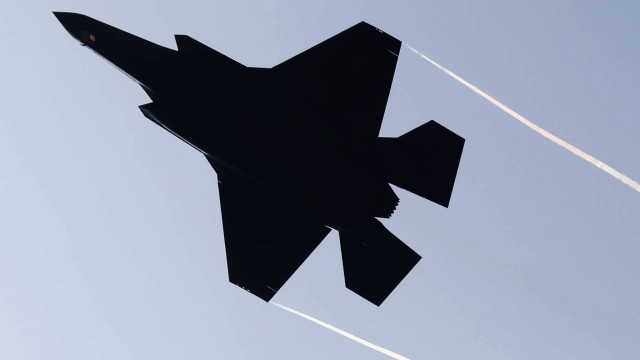Almost all ballistic missiles and drones fired by Iran at Israel in an unprecedented attack late Saturday were intercepted and failed to reach their target, Israeli and US officials said. This underscores the formidable and multi-layered missile defenses deployed by both alliance partners. This is according to a CNN analysis.
More than 300 Iranian drones and missiles launched during the five-hour attack were intercepted before reaching Israel more than 1,770 km from their launch sites. Israel's military said "99 percent" of the missiles fired by Iran were intercepted by Israel and its partners, with only a "small number" of ballistic missiles reaching Israel.
In total, some 170 drones, more than 30 cruise missiles and more than 120 ballistic missiles were fired at Israel by Iran overnight Saturday, the military said.
In a conversation on Sunday, US President Joe Biden told Israeli Prime Minister Benjamin Netanyahu that it represented a victory for Israel because nothing "of value" was hit, a senior US administration official told CNN. US officials revealed that more than 70 drones and three ballistic missiles were intercepted by US Navy ships and warplanes, without detailing exactly what defenses were used to bring down the weapons. The US Navy shot down at least three ballistic missiles using the Aegis missile defense system aboard two guided-missile destroyers in the eastern Mediterranean, officials told CNN's Oren Lieberman at the Pentagon. American warplanes also shot down Iranian assets, Lieberman said. Although it was not disclosed where these US aircraft operated from, there are US Navy aircraft carriers and surface-based aircraft within range of the region.
Biden said in a statement that the US is well prepared to help defend Israel against Iranian attack. "To support Israel's defense, the US military has moved ballistic missile defense aircraft and destroyers into the region over the past week," the US president said. "Thanks to this deployment and the extraordinary skills of our service members, we have helped Israel shoot down almost all of the drones and missiles that have been fired," Biden said.
Britain has also said it is ready to intervene using Royal Air Force aircraft it has in the region. "These UK aircraft will intercept any air attacks within the scope of our existing missions when necessary," the Ministry of Defense said in a statement.
An Israeli military spokesman also said France was involved in blocking the Iranian attacks. “We are working closely with the US, UK and France who acted tonight. This partnership has always been close, but tonight it manifested itself in an unusual way," the spokesman said.
Israel, meanwhile, operates an array of systems to block attacks from everything from ballistic missiles with trajectories that lift them above the atmosphere to low-flying cruise missiles and drones. Israel's Iron Dome system has often made headlines since the country launched its military offensive in Gaza in response to the October 7 Hamas attacks on Israel that sparked the current hostilities in the region. The Iron Dome is the lowest segment of Israel's missile defenses, according to the country's Missile Defense Organization (IMDO). Israel has at least 10 Iron Dome launchers, each equipped with a radar that detects missiles and then uses a command and control system that quickly calculates whether an incoming projectile poses a threat or is likely to hit an unpopulated area. If the missile does pose a threat, the Iron Dome fires missiles from the ground to destroy it in the air.
The next rung up the missile defense ladder is David's Sling, which protects against short- and medium-range threats, according to IMDO. The "slingshot" is a joint project of the Israeli company Rafael Advanced Defense System and the American defense giant Raytheon. It uses kinetic interceptors to destroy targets up to 186 miles away, according to the Missile Threat Project at the Center for International and Strategic Studies (CSIS).
Above the "David's Sling" are the Israeli Arrow 2 and Arrow 3 systems developed jointly with the US. Arrow 2 uses fragmentation warheads to destroy incoming ballistic missiles in their terminal phase as they dive towards their targets in the upper atmosphere. Arrow 2 has a range of 56 miles and a maximum altitude of 32 miles. Arrow 2 is an upgrade to the American Patriot missile defense system once used by Israel.
Meanwhile, Arrow 3 uses hit-to-kill technology to intercept incoming ballistic missiles in space before they re-enter the atmosphere on their way to targets.
Israel also has state-of-the-art warplanes, including F-35I stealth jets, which it has previously used to shoot down drones and cruise missiles, according to news reports.
Ballistic missiles that reached Israel fell on the Netavim airbase in southern Israel, the Israeli military spokesman said, adding that they caused only minor damage. The base is operational and continuing operations after the attack, with aircraft continuing to use the base, he added. Pictures released by the Israeli Air Force early Sunday showed F-35 and F-15 fighter jets returning to their bases in Israel after so-called successful "intercepts" and "air defense missions." Some of the weapons fired at Israel were fired from Iraq and Yemen, the spokesman added. /BGNES




.jpeg)


